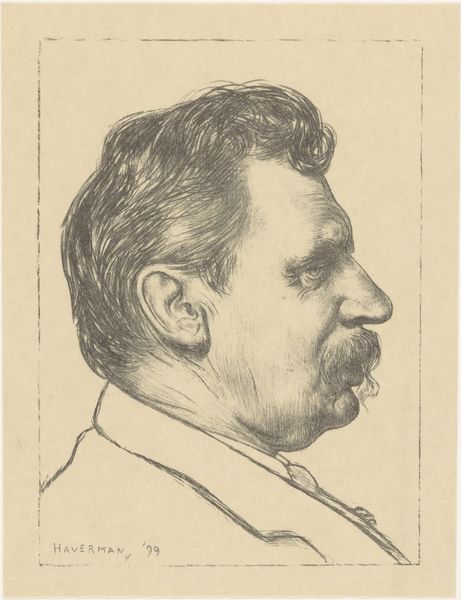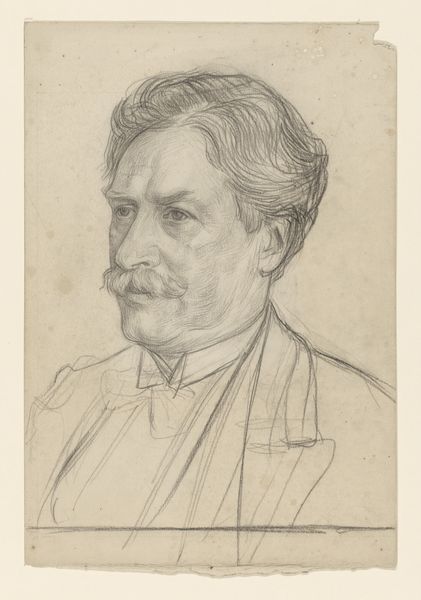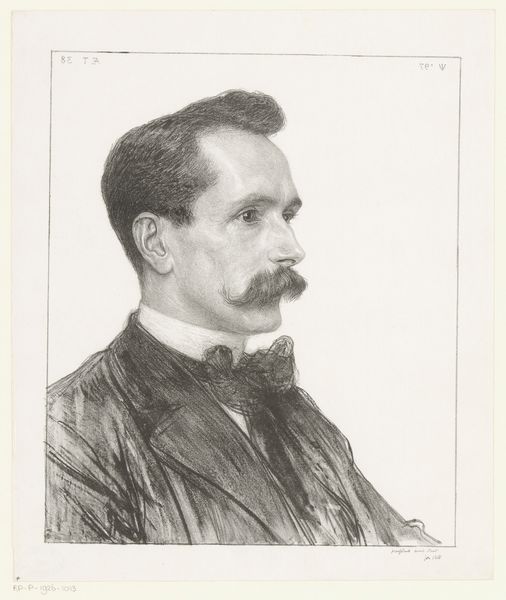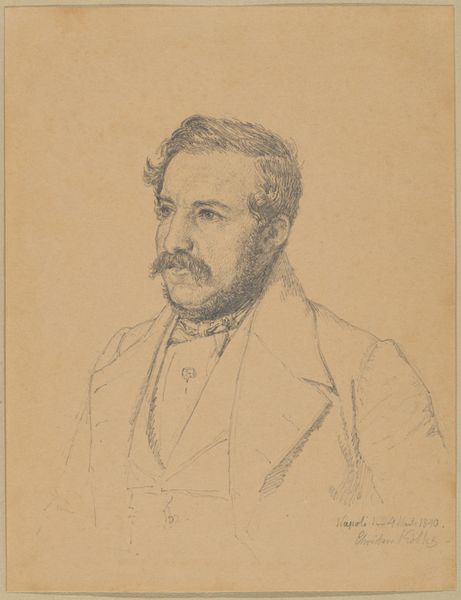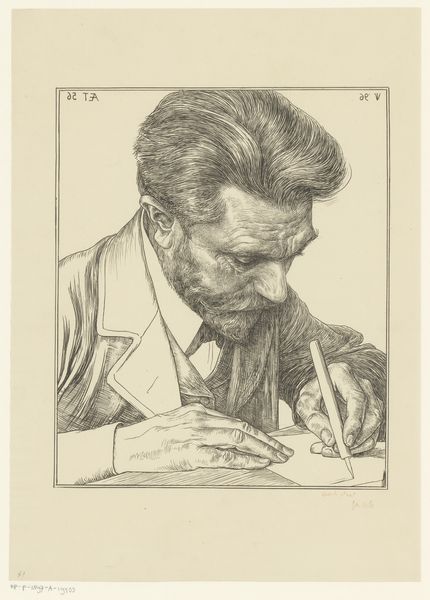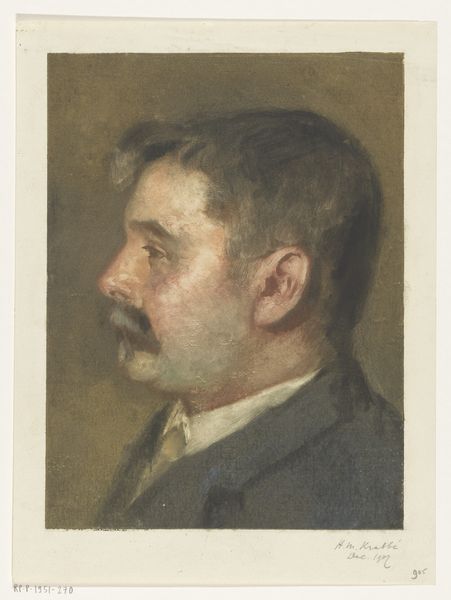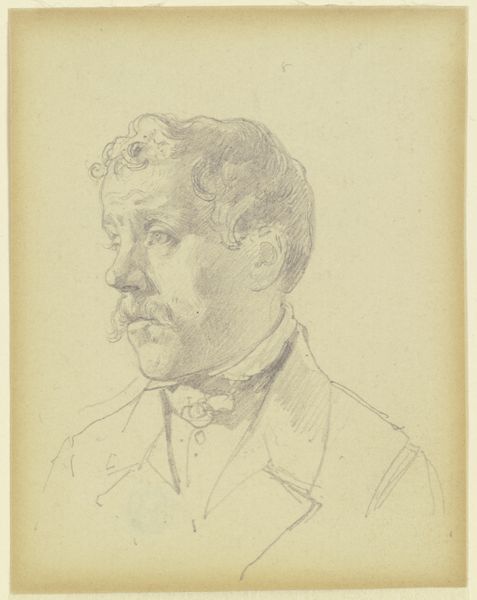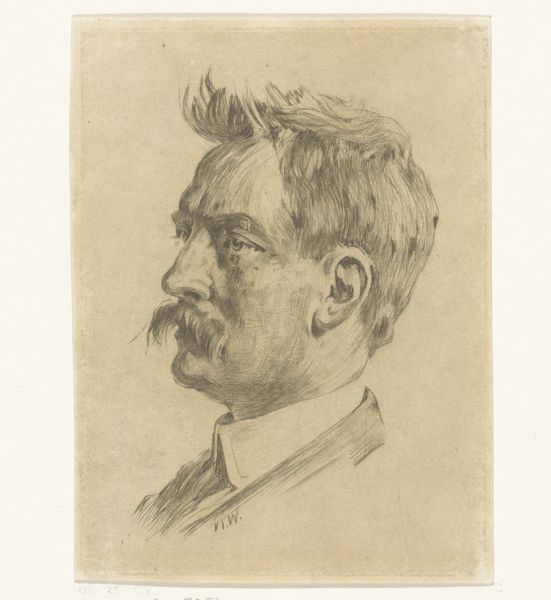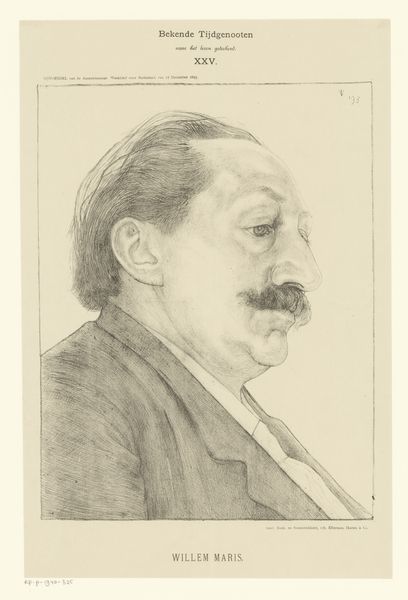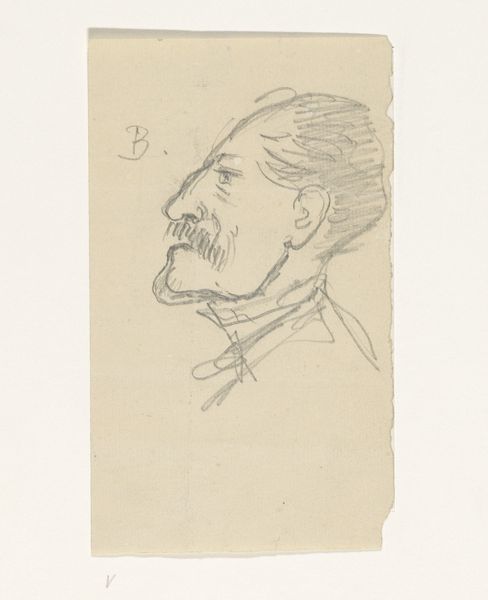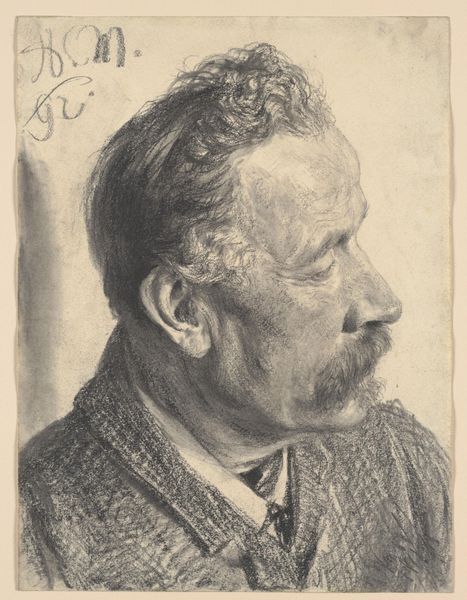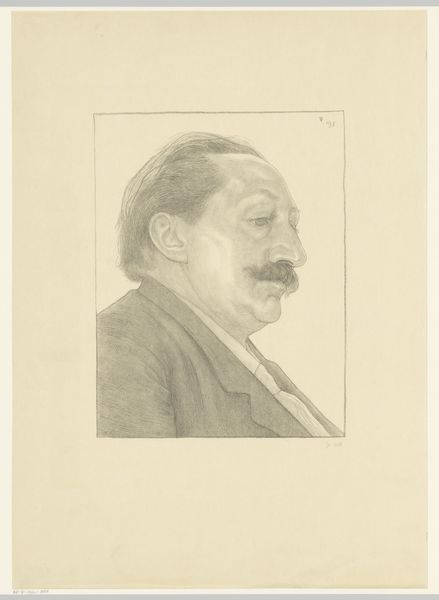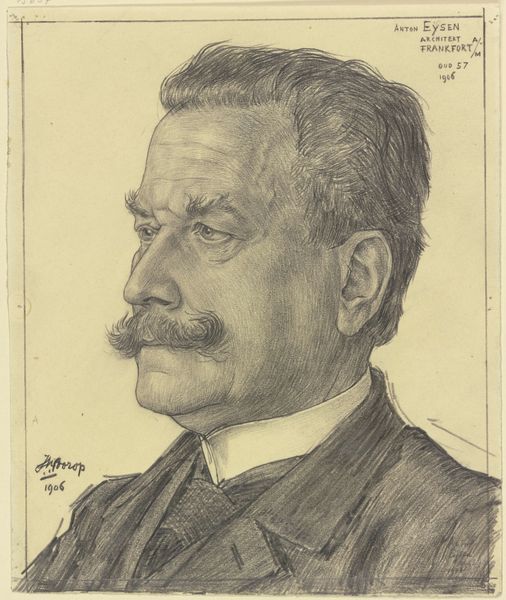
drawing, pencil
#
portrait
#
drawing
#
pencil drawing
#
pencil
#
portrait drawing
Dimensions: height 409 mm, width 282 mm
Copyright: Rijks Museum: Open Domain
Curator: Immediately, I see the shadow and weight on his face giving him such gravity. Editor: That’s a fine observation. We’re looking at Ferdinand Hart Nibbrig's pencil drawing titled “Portrait of Albert Neuhuys,” dating from possibly 1895 to 1897. It strikes me as a fascinating study of a well-known figure in the Dutch art scene. Curator: The bow tie is a symbol of success. His suit tells us all we need to know. It brings the concept of 'icon' into stark clarity; this is someone the public needs to pay attention to. How was Neuhuys regarded at that time? Editor: As a prominent member of the Hague School, specializing in genre painting with a focus on rural life. This portrait subtly reinforces Neuhuys’ established image. Its dissemination contributed to how he was received, and the role he played, within the art world. Curator: It is striking, how this rendering leans into existing themes in visual language. With the shadows, it seems as if his gaze extends further than the page. How interesting for Hart Nibbrig to acknowledge him this way. Editor: The choice of pencil as the medium also plays into it. Drawings such as these were distributed widely as printed matter. These became cultural documents of celebrity in an age before digital reproduction. This print was "number XXXIV" in a series called "Bekende Tijdgenooten" which roughly translates to "Well-Known Contemporaries." Curator: The way the eyes are drawn seems to imply so much more—sadness, empathy. I wonder what was in Hart Nibbrig’s mind when he chose that look? The use of shadow and light isn’t just for depth; it conveys internal awareness. It humanizes him and suggests there is cultural trauma embedded here. Editor: Perhaps Hart Nibbrig’s approach highlights the growing emphasis on artists' personalities and individual experiences at the end of the 19th century, and that his choices were consciously attempting to inject those ideas to how we understood famous people at the time. It’s a captivating intersection of art, personality, and social context. Curator: I hadn’t considered it quite that way, so fascinating to think about this artist intentionally engaging in these types of cultural myths, in order to create a legacy that extends much farther than art. Thank you for sharing.
Comments
No comments
Be the first to comment and join the conversation on the ultimate creative platform.
